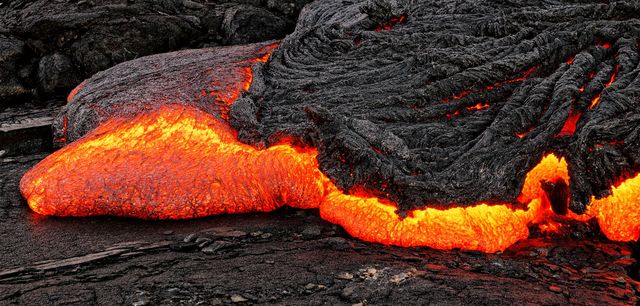30 May 2024
Humans have travelled to the moon and dived down to the deepest point of the oceans. But a journey to the centre of the Earth will always remain the preserve of science fiction. This is because there isn’t a drill in the world that would be able to withstand the pressure and heat that prevail there. So, how is it that researchers can still say what the inside of our blue planet is made of?
The deepest hole on Earth is located on the Kola Peninsula. It was here in 1989 that Russian geoscientists drilled 12,262 metres down into the depths. This was no mean achievement – and yet it barely made a dent in the Earth’s crust. To reach the centre of the Earth would involve drilling down a further 6,388 kilometres. And even in this relatively shallow borehole, the temperature soars to over 200 degrees and the pressure is one hundred times higher than that found in a car tyre. And the deeper you go, the greater the pressure becomes and the hotter and denser the rocks that make up the Earth’s crust get; far too much for our technology.
Hot information from the depths
This means that researchers can only determine indirectly what things look like deep below the Earth’s surface. One of the operating principles is this: If we can’t dig deep enough, let’s just take a closer look at what our active planet throws up itself – via volcanoes. Volcanoes hurl hot material from depths of hundreds of kilometres up to the Earth’s surface. Researchers can then learn a lot about the composition of the Earth’s layers from the lava, once it has cooled.
The same applies to the diamonds that are formed at a depth of 150 to 800 kilometres. The temperature and pressure found there are high enough to bake common-or-garden carbon into precious gems. The diamonds, in turn, are propelled upwards with the hot magma of active volcanoes and spat out onto the Earth’s surface. If you cut them open, they always contain minerals or other inclusions from the depths at which they originated.
X-ray image of the Earth
However, the extreme activities of our restless planet offer researchers different pathways to insight into what things look like down below. One method they can employ is to investigate earthquake waves. If the earth moves in one place, these tremors spread through the entire globe in a similar way to sound waves. But not always at the same pace: The waves move faster in hard material than they do in soft. If they encounter particularly dense rock layers, they can also be reflected, like light from a pane of glass, for instance. And unlike the fast P-waves, the slower S-waves cannot pass through liquids at all.
A global network of seismographs records these waves and their course. From the patterns revealed by the measurements, researchers can ascertain the type of waves involved and their speed and retrace their path through the globe. In this way, an increasingly precise picture gradually emerges of how solid, thick or thin the Earth’s layers are down in the depths, whether they consist of rocks or metals and where the boundaries of these layers lie: an X-ray image of the Earth.
Gigantic peach
What the researchers learned is this: The structure of the Earth is reminiscent of a peach. On the outside you have a thin, solid shell – the Earth’s crust of rock, on average 35 kilometres thick. Underneath is the pulp – the Earth’s mantle, an almost 3,000-kilometre-thick layer of magnesium- and iron-rich rock, which is as tough as wax. In the middle is the core, which in the case of the Earth mainly consists of iron and nickel. This is in turn made up of an inner and an outer core. Unlike the peach, however, the outer core, which is around 2,200 kilometres thick, is not rock hard. Due to the 5,000-degree temperatures which prevail there, the metal is molten and as thin as mercury.
In the centre is the solid inner core. This is slightly smaller than the moon and, at more than 6,000 degrees, as hot as the surface of the sun. The pressure that prevails there is 3.6 million times higher than the pressure of the Earth’s atmosphere. It compresses the Earth’s core into a glowing ball of iron and prevents it from melting.
In the liquid outer core of the Earth, due to the Earth’s rotation and the flows which are found there, and driven by the heat of the Earth’s core, forces arise which act like those in a dynamo. Electric currents are formed, along with a colossal magnetic field. This magnetic field, together with the atmosphere, protects the Earth from dangerous radiation from space. Without its magnetic centre, our blue planet would be desolate and empty.



